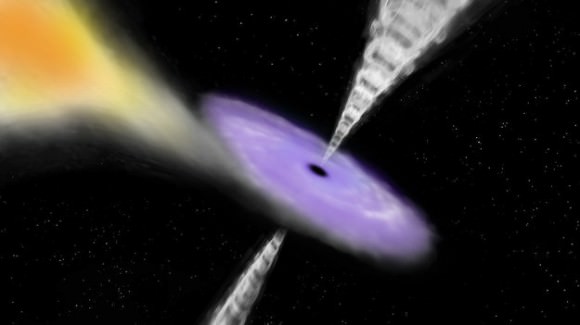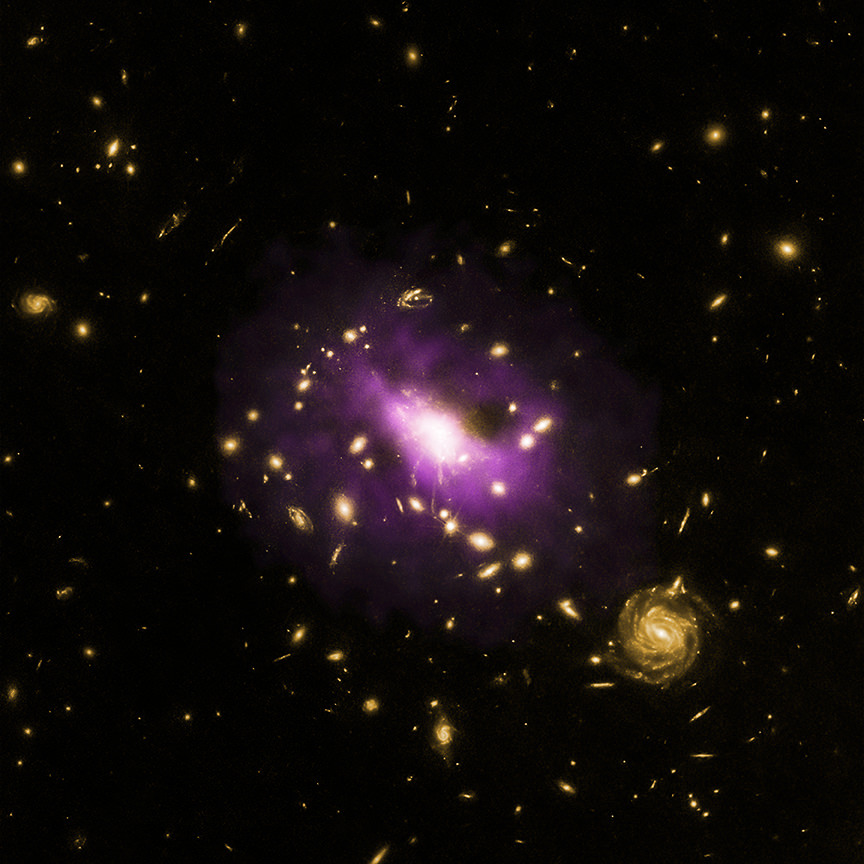Got gas? The black hole in galaxy cluster RX J1532.9+3021 is keeping it all for itself and stopping trillions of stars from coming to be, according to new research. You can see data above from NASA’s Chandra X-ray Observatory (purple) and the Hubble Space Telescope (yellow).
The drama is taking place about 3.9 billion light-years from Earth, showing an extreme phenomenon that has been noted in other galaxies on smaller scales, Chandra officials stated.
“The large amount of hot gas near the center of the cluster presents a puzzle,” a statement read. “Hot gas glowing with X-rays should cool, and the dense gas in the center of the cluster should cool the fastest. The pressure in this cool central gas is then expected to drop, causing gas further out to sink in towards the galaxy, forming trillions of stars along the way. However, astronomers have found no such evidence for this burst of stars forming at the center of this cluster.”

What’s blocking the stars (according to data from Chandra and the National Science Foundation’s Karl G. Jansky Very Large Array) could be supersonic jets blasting from the black hole and shoving the gas in the area away, forming cavities on either side of the galaxy. These cavities, by the way, are immense — at 100,000 light-years across each, this makes them about as wide as our home galaxy, the Milky Way.
The big question is where that power came from. Perhaps the black hole is “ultramassive” (10 billion times of the sun) and has ample mass to shoot out those jets without eating itself up and producing radiation. Or, the black hole could be smaller (a billion times that of the sun) but spinning quickly, which would allow it to send out those jets.
You can find more details in a November 2013 paper from The Astrophysical Journal (also available in a prepublished version on Arxiv.) The research was led by Julie Hlavacek-Larrondo from Stanford University.
Source: Chandra X-Ray Observatory

